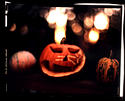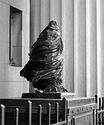noah977
Member
- Joined
- Aug 23, 2009
- Messages
- 19
- Format
- Medium Format
Hi,
I'm planning a series of black and white nudes. Shot medium format.
I'm in love, with a lot of the skin tones achieved by Weston.
Here are some examples:
http://www.edward-weston.com/edward_weston_nudes_16.htm
http://www.edward-weston.com/edward_weston_nudes_15.htm
Now clearly, much of this was done in the darkroom with chemistry, brilliant dodging, paper selection etc.
I've generally stuck to Tri-x and Plus-x, but never got that tone I've been looking for.
That said, what would the group suggest for film choices?
I'm planning a series of black and white nudes. Shot medium format.
I'm in love, with a lot of the skin tones achieved by Weston.
Here are some examples:
http://www.edward-weston.com/edward_weston_nudes_16.htm
http://www.edward-weston.com/edward_weston_nudes_15.htm
Now clearly, much of this was done in the darkroom with chemistry, brilliant dodging, paper selection etc.
I've generally stuck to Tri-x and Plus-x, but never got that tone I've been looking for.
That said, what would the group suggest for film choices?





